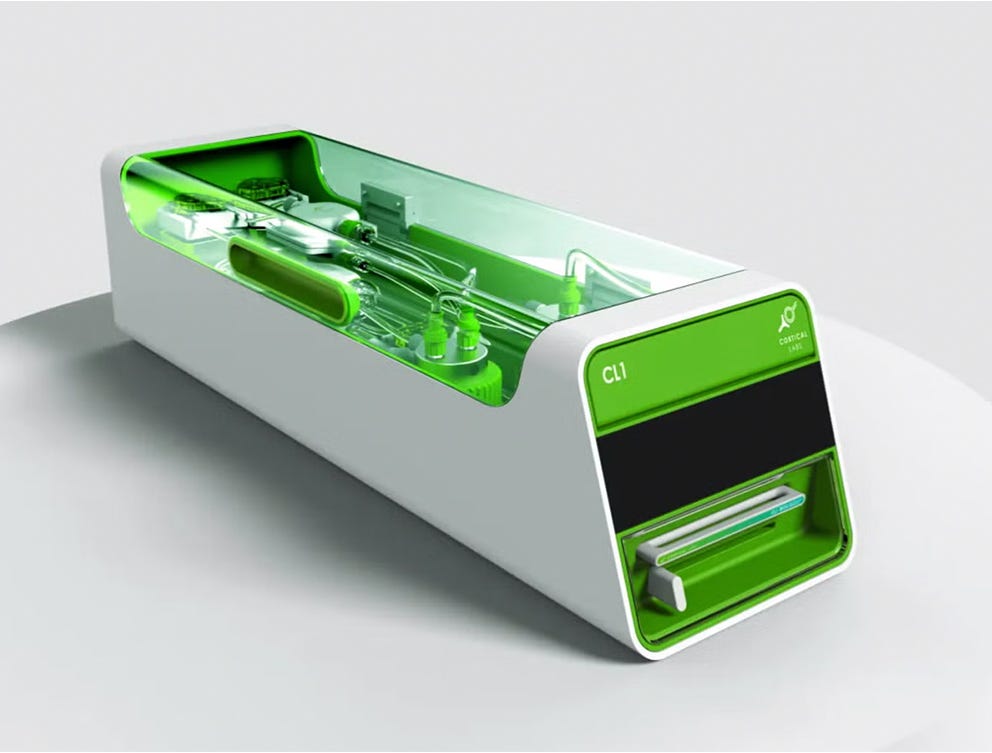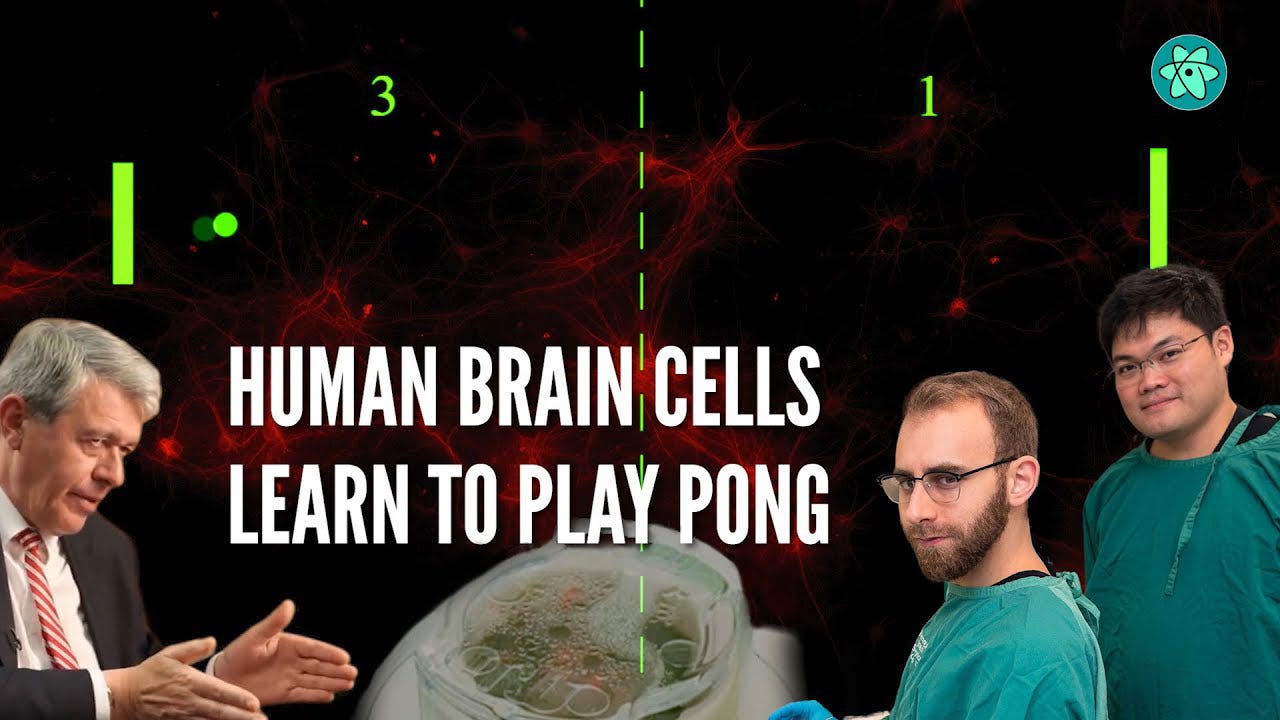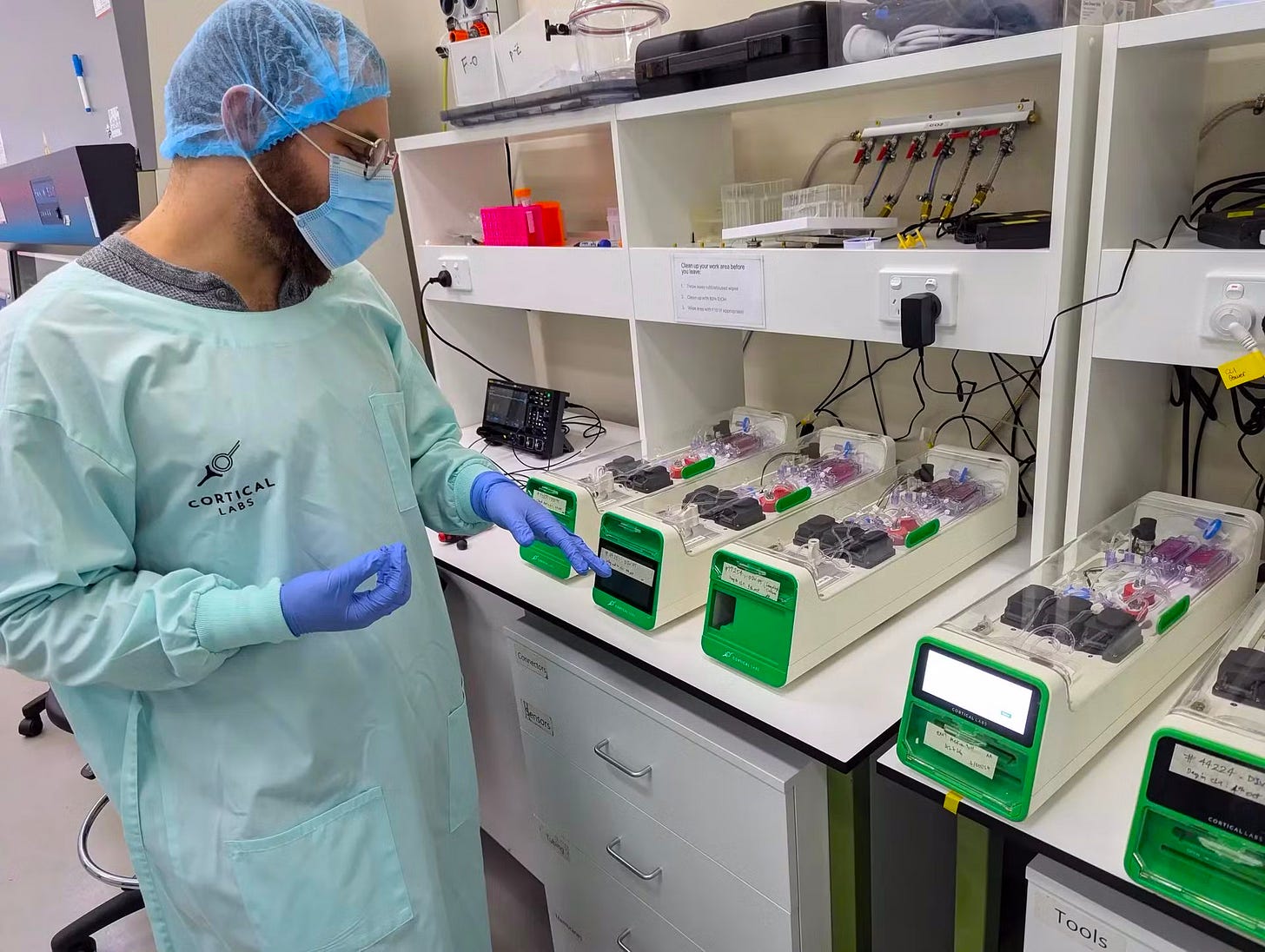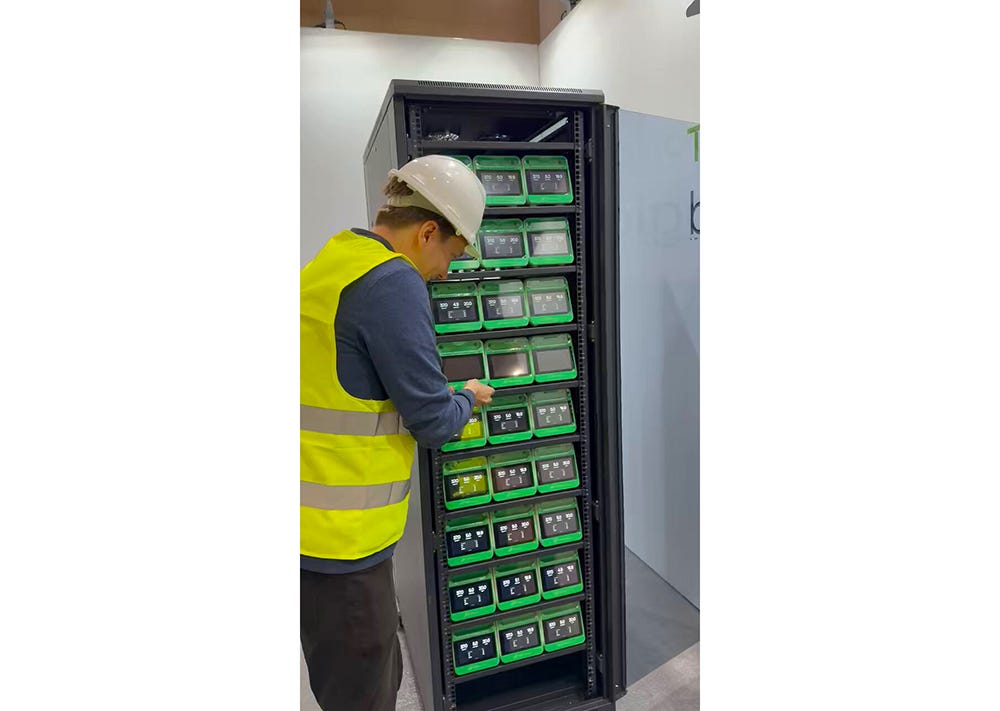Exclusive Inside Look: One-on-One with Cortical Labs’ Chief Scientist — From DishBrain to CL1
New Podcast Episode & Article
Exclusive Inside Look: One-on-One with Cortical Labs’ Chief Scientist — From DishBrain to CL1
The concept of merging biological components with traditional silicon-based computing might sound like pure science fiction, but for Cortical Labs, it represents the cutting edge of what is possible in “artificial ‘actual’ intelligence.” In my recent in-depth, one-on-one conversation with Brett Kagan, Chief Scientist at Cortical Labs, we explored the groundbreaking field of what they refer to as, synthetic biological intelligence (SBI), and the technology behind their latest innovation. CL1 is the world’s first commercially available biological computer, fusing lab grown human brain cells to silicon chips.
Watch the full interview on Spatial Web AI Podcast here:
🔗 YouTube:
🔗 Spotify: https://spotifycreators-web.app.link/e/HWE6ZVhxBSb
Origins and Vision
Cortical Labs was founded in 2019 around a core question: what fundamentally drives intelligence? According to Kagan, “While people, especially back then, were looking at a lot of different silicon methods, at the end of the day, the only ground truth we had for true generalized intelligence were biological brain cells.” Kagan explains, highlighting the central motivation behind Cortical Labs’ unique approach.
“We asked ourselves the question, what if we could actually leverage these instead of just modeling them? Would that give us a more powerful processor?” — Brett Kagan, Chief Scientific Officer, Cortical Labs
From DishBrain to CL1
Cortical Labs first captured attention with their “DishBrain” experiment in 2022, where lab-grown neurons successfully learned to play Pong by processing predictable versus chaotic electrical signals. This experiment validated their concept but left questions about scalability and practical applicability.
Notably, the experiment’s training methods were designed as a test of Professor Karl Friston’s Free Energy Principle — a theory suggesting intelligent systems act to minimize surprise or unpredictability in their environments.
Cortical Labs developed an approach where neurons received unpredictable signals every time they “got it wrong,” compelling them to adapt their behavior. Kagan described this as a critical experiment: it would either provide strong evidence in support of the Free Energy Principle or challenge its validity. The results provided remarkable support for the theory, demonstrating conclusively that neurons structured their behavior to minimize unpredictability, thereby validating the principle in a new and exciting way.
Fast forward to March 2025, the company announced its revolutionary computing system, the CL1, described as a self-contained “body in a box.” This advanced system integrates living neurons with silicon chips, creating adaptive, self-learning networks placed on a grid of 59 electrodes. The neurons themselves originate from induced pluripotent stem cells (iPSCs), capable of developing into any type of cell. In this case, they were tailored into neurons forming learning networks.
The Science Behind CL1
At the heart of CL1 is the interplay between biology and silicon, bridged by electricity — the “shared language” of both neurons and microchips.
“One of the really nice things is that the shared language between neural cells and silicon computing is electricity. Both of them ultimately use electricity in some way to communicate. And so it’s this bridge.” — Brett Kagan, Chief Scientific Officer, Cortical Labs
The neurons are kept alive in a specially engineered environment mimicking human physiological conditions, utilizing carefully managed media for nutrients, temperature control, and filtration systems. Remarkably, neurons in the CL1 routinely survive for six months or more, with aspirations to extend that lifespan significantly.
According to Kagan, their experiments regularly achieve survival rates beyond six months, with some cells maintained successfully for up to a year. These longevity records suggest that longer-term applications and stability for practical use in industries such as pharmaceuticals, robotics, and personalized medicine are all well within reach.
Training and Learning: Active Inference and the Free Energy Principle
Training neurons to learn and adapt hinges significantly on theoretical insights from Professor Karl Friston’s Free Energy Principle and Active Inference frameworks. These theories propose that intelligent systems naturally act to minimize surprise or unpredictability within their environment. In practical terms, Cortical Labs employs methods where neurons experience predictable and random signals as feedback, prompting the networks to adjust their behavior toward more predictable outcomes.
Interestingly, while other companies like FinalSpark have employed neurotransmitters like dopamine as chemical rewards in neuron training, Kagan explains Cortical Labs’ strategic focus is on scalability and nuanced control.
“I think the way you can go with that ultimately is fairly limited, especially if you want to start to reward discrete units… So I think rewarding neurons with dopamine is perfectly good as a lab experiment. But how would you scale this into a more complex device?”
They prefer to understand the fundamental biological mechanisms behind neurotransmitter signaling and replicate them through electrical feedback rather than directly introducing chemical rewards.
Energy Efficiency and Sustainability
An exciting advantage of synthetic biological intelligence lies in its inherent energy efficiency. Kagan notes that CL1 racks consume less than 1 kilowatt of power — a mere fraction of the power required by conventional AI data centers. This dramatically reduced energy footprint could significantly influence the future of sustainable computing, making large-scale deployments economically and environmentally feasible.
Practical Applications: Transforming Industries
The potential applications of CL1 are vast. Key areas of impact include:
Drug Discovery & Disease Modeling: Rapidly accelerates research while reducing reliance on animal testing.
Personalized Medicine: Utilizes patient-derived cells for customized treatment strategies.
Robotics: Enhances robotic intelligence with biological learning capabilities, providing human-like adaptive responses.
The flexibility of CL1, complete with a programmable bidirectional interface and a robust Python API, empowers researchers to design and conduct a wide array of custom experiments. This functionality is available both through physical unit purchases for labs and remotely via Cortical Labs’ “wetware as a service” cloud-based model.
Ethical Considerations
Brett Kagan addressed the ethical implications of Cortical Labs' research very openly and clearly, emphasizing that, despite their biological origins, these neuron networks are not conscious. He stated that their very first published paper from Cortical Labs was an ethics paper, and since then, they've collaborated with numerous independent international bioethicists, philosophers, and regulatory experts to continuously address ethical concerns. Emphasizing their commitment to responsible development, he states:
"We pretty much always have a paper ongoing in this area, working with independent people to make sure that this research can be developed and applied responsibly... We'll continue to work on it because it's the right thing to do."
However, they openly acknowledge the complex ethical questions raised by their research, ensuring transparency and responsible oversight as their technology advances.
“I’m not going to say that there aren’t ways where companies could do things unethically, and I do have some concerns about some things going on with what other people are doing in other areas. But you can also do it correctly and openly. And that’s the approach we’re taking.”
Future Directions: Scaling Up and Beyond
As Cortical Labs moves forward, scalability remains a priority. The ultimate vision includes fully integrated “server racks” of CL1 units capable of supporting complex research and industrial applications. Challenges remain, particularly in refining life-support systems and optimizing neuron integration, but the trajectory is clear — synthetic biological intelligence is positioned to revolutionize the technological landscape.
Looking further ahead, Kagan envisions synthetic biological intelligence dramatically transforming our approach to AI and computing over the next decade, offering unprecedented adaptability and efficiency.
Cortical Labs’ CL1 represents a radical leap into a future where biology and technology fuse seamlessly. By harnessing the adaptability, energy efficiency, and inherent intelligence of living neurons, synthetic biological intelligence promises a new era of technological advancement with profound implications across industries.
Don’t miss my full podcast interview with Brett Kagan on the Spatial Web AI Podcast where we go deep into these topics, and more!
Watch here:
🔗 YouTube:
🔗 Spotify: https://spotifycreators-web.app.link/e/HWE6ZVhxBSb
Huge thank you to Brett Kagan for being on our show!
Connect with Brett Kagan:
LinkedIn: https://www.linkedin.com/in/brett-kagan-6ba996146/
To learn more about Cortical Labs visit :
https://corticallabs.com/









